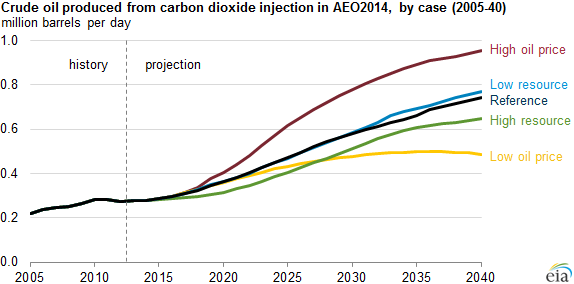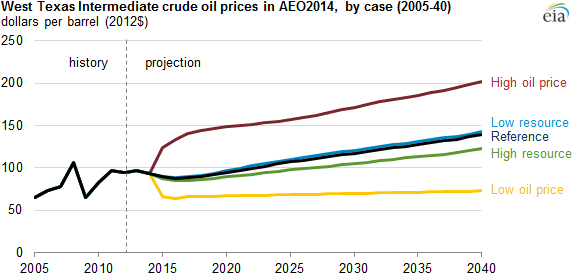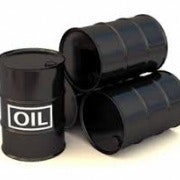Predicting the use of CO2-enhanced oil recovery
In the 2014 Annual Energy Outlook, the US Energy Information Administration projects that the price of oil will largely determine whether to use carbon dioxide enhanced oil recovery (EOR) technologies to extract additional crude oil from existing producing fields.
The injection of CO2 gas into oil reservoirs at high pressure forces the CO2 to mix with oil. This reduces the oil's viscosity and causes the oil to increase in volume (swell). The result is an increase in the total cumulative volume of oil produced and in the percentage of oil-in-place that is recovered. The decision by a producer whether or not to employ this technique depends on a number of factors, including the geophysical properties of the reservoir, the oil within that reservoir, the cost of applying CO2 EOR, and the revenue received from additional production.
The injection of miscible (capable of being mixed) CO2 into old oil fields to recover more of the oil-in-place is an expensive undertaking. The cost of the CO2 itself can add $US20 to $US30 per barrel of oil produced. In addition, the producer must pay for surface facilities to separate the CO2 from the production stream and compress it back into the oil reservoir. The producer also incurs a financial cost for the time delay associated with repressurising old reservoirs. Oil prices thus play an important role in determining whether the additional production resulting from applying CO2 EOR to old fields is sufficient to make this process commercially and economically feasible.

Source: US Energy Information Administration, Annual Energy Outlook 2014
In the 2013 Annual Energy Outlook 'high oil price' case, the West Texas Intermediate crude oil price rises to $US202 per barrel (2012 dollars) by 2040, 45 per cent more than in the reference case. This higher oil price increases the number of old fields that can profitably produce oil using CO2 EOR technology. Oil production in this case reaches 960,000 barrels per day by 2040, 30 per cent more than in the reference case, in which it reaches 740,000 barrels per day.
The opposite results occur in the 'low oil price' case, with WTI prices reaching only $US73 per barrel by 2040, limiting the incentive for producers to apply CO2 EOR to old fields. CO2 EOR production reaches only 480,000 barrels per day by 2040 (35 per cent less than in the Reference case). In the reference case, CO2 EOR production accounts for 10 per cent of total US crude oil production, versus 12 per cent in the 'high oil price' case, and 8 per cent in the 'low oil price' case.

Source: US Energy Information Administration, Annual Energy Outlook 2014
The 'high oil and gas resource' case projects a CO2 EOR production of 650,000 barrels per day in 2040 (12 per cent lower than in the Reference case). In comparison, CO2 EOR oil production is more profitable in the 'low oil and gas resource' case, where higher oil prices result in CO2 EOR oil production that reaches 770,000 barrels per day in 2040 (4 per cent higher than in the reference case).
Originally published by the US Energy Information Administration. Reproduced with permission.
















